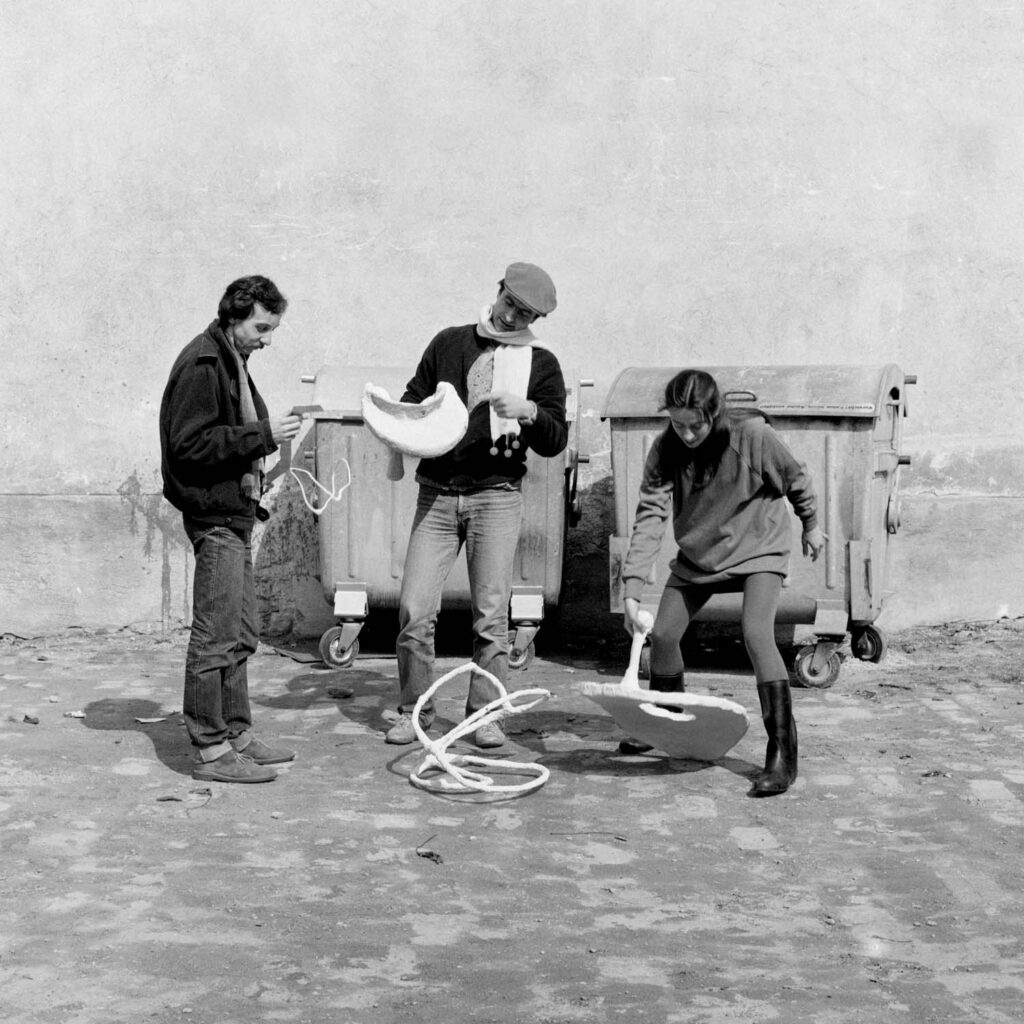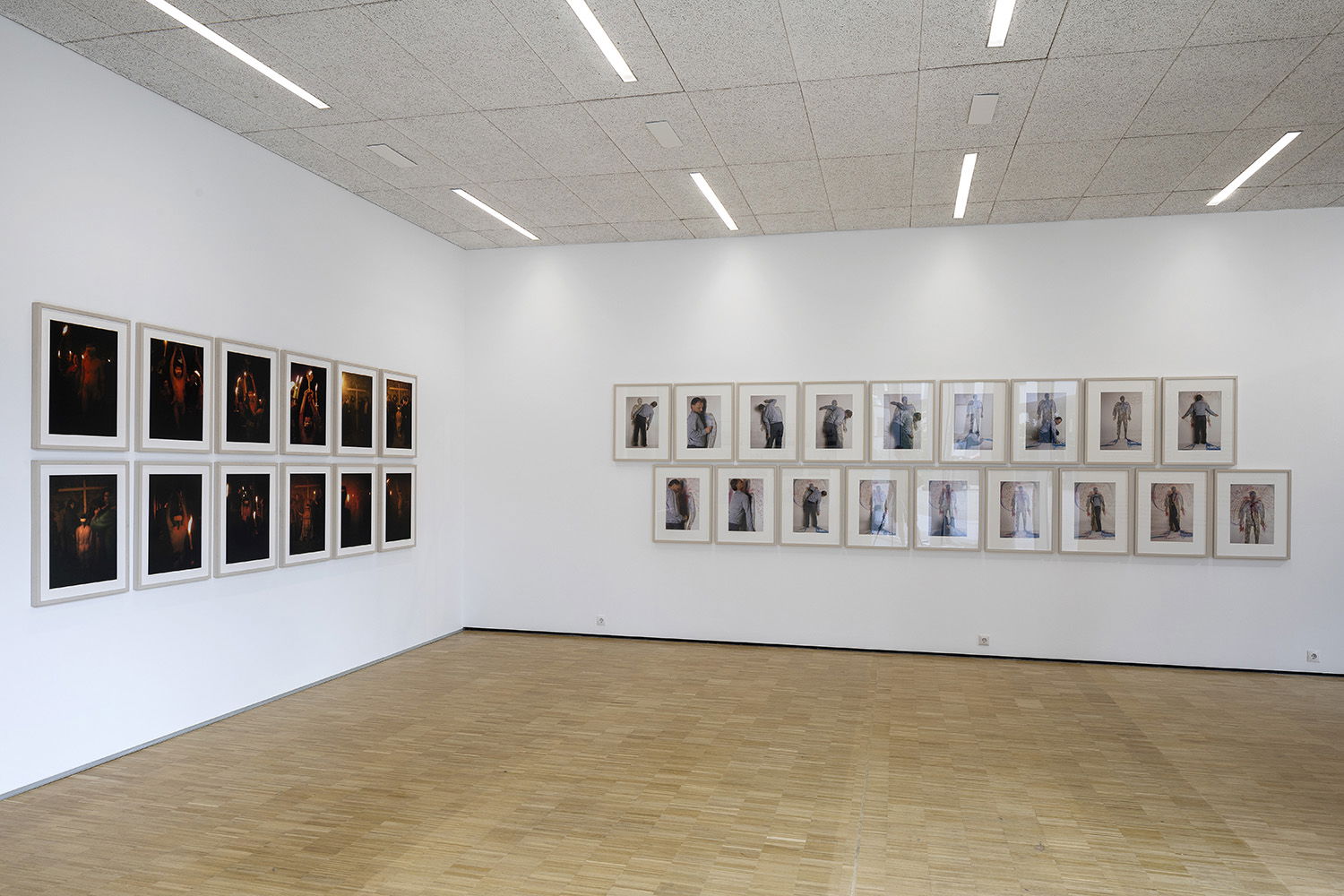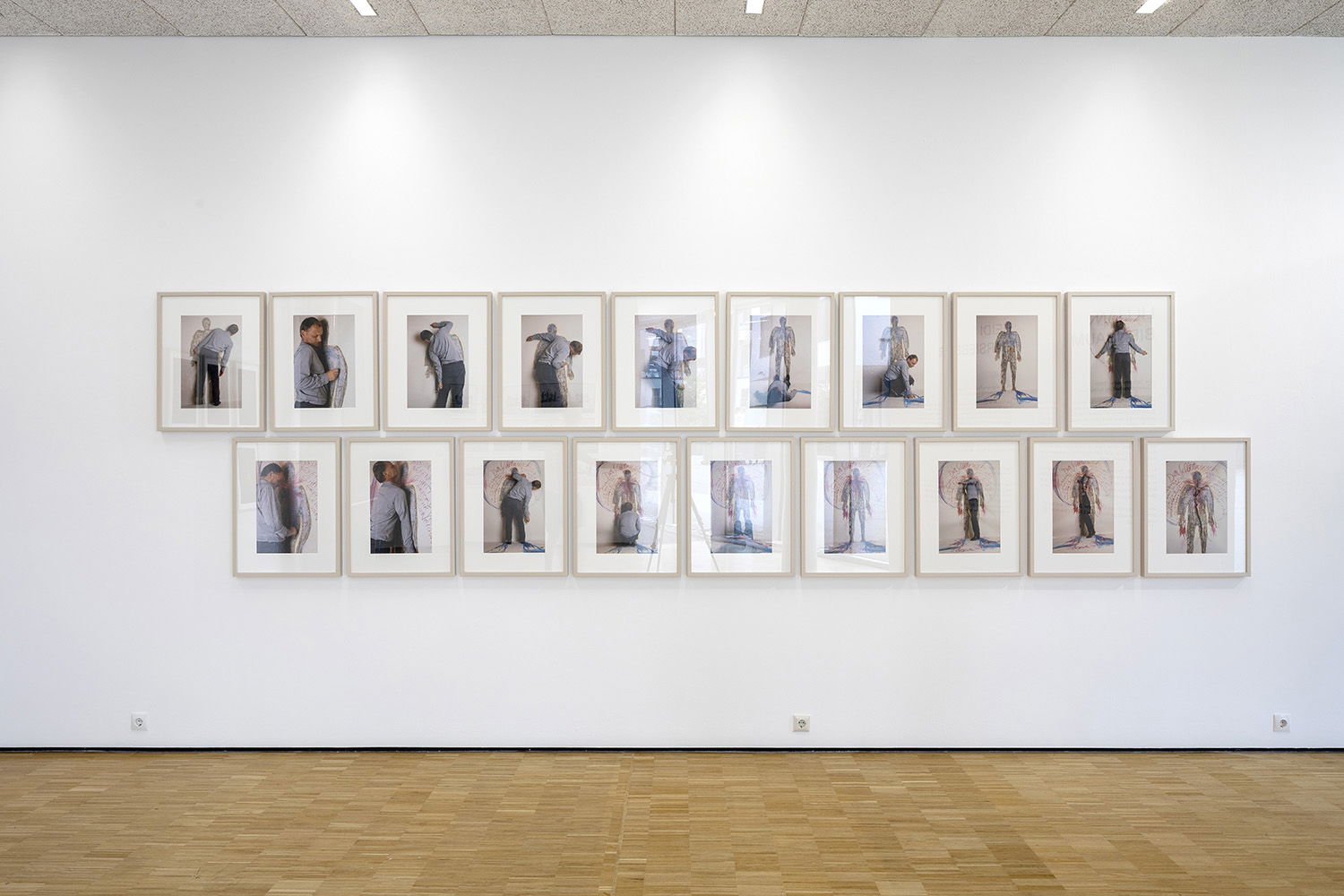Lillian Birnbaum, Heidi Harsieber
With photo series by Lillian Birnbaum and Heidi Harsieber, the FOTOHOF>STUDIO presents collaborations that these two artists created in the 1980s with fellow artists who were active in the field of Actionism. In line with the concept of the FOTOHOF>ARCHIVE, we have worked with the two photographers to republish early projects, which are now difficult to access, as part of the archive and in some cases reworked them in order to make them available again for the art discourse.
Lillian Birnbaum
Lillian Birnbaum photographed the series »Der Selbstmensch« (originally published by the galleries Heike Curtze and Petra Seiser) in Günter Brus’ studio. In a text from 2015, he wrote about their collaboration: »…) we developed the idea that Lillian Birnbaum would take a series of photographs of the creation of a life-size drawing in my studio. (…) I used it to showcase the action, drawing and writing together, which Lillian Birnbaum captured congenially.«

Heidi Harsieber
Heidi Harsieber took advantage of a rehearsal that Hermann Nitsch carried out in the earthy cellar of his castle in Prinzendorf before the start of his 3-Day-Play in 1984, during which she also tested her own photographic possibilities without artificial light or other aids using analog film. This resulted in a unique series in a relaxed rehearsal situation, which at the same time possesses a special authenticity, as it does without the later staging of the great festival. The dark mood of the photos and their almost painterly graininess are due to these special conditions under which they were taken.
With the photo series »Franz Koglmann, rehearsal for dance music for Paszstücke by Franz West (1983)«, Heidi Harsieber collaborated with two artists: she documents a rehearsal for a composition that the Austrian jazz musician Franz Koglmann performed with and for Franz West’s sculptural objects. With these »Paszstücke«, which adapt to human body shapes or extend them (also in a figurative sense), Franz West has been attempting to eliminate the separation between art/object and viewer/user since the mid-1970s, an objective that is also characteristic of Viennese Actionism.









